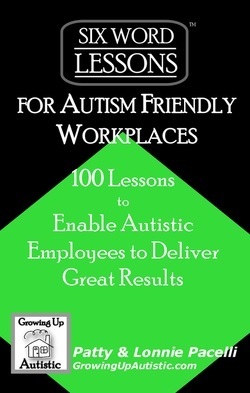Lonnie Pacelli's Blog, page 88
November 25, 2013
Living Work-Life Balance
 So it's been a few months since you heard from me. Rest assured it's not because I've been sipping iced tea on some remote beach. Since May my family and I have done the following:
So it's been a few months since you heard from me. Rest assured it's not because I've been sipping iced tea on some remote beach. Since May my family and I have done the following:Put our house on the market that we lived in since 1993
Sold and closed on said house
Donated/sold most all of our furniture and many other items
Finalized renovations on a new waterfront home Moved from our existing home to our waterfront home
Furnished waterfront home
Coordinated business and personal address changes Hosted family members in celebration of our son's high school graduation Traveled to New York to celebrate his graduation Purchased and learned how to drive and dock a boat (and learned lesson #1 - only go as fast as you want to crash into something J) Replaced the transmission on one of our vehicles (OK so I paid someone to do it) Amazon.com Widgets So I tell you all this not to bore you with my personal life details, but rather to talk with you about living and breathing work-life balance. In April my wife and I were looking at all of the things we were needing to get done over the summer and realized that it was going to be a VERY busy time with lots of moving parts and things which couldn't fall through the cracks. I decided that for me to be most effective I needed to put a few things on a back burner until we got through the summer. Writing my One Nugget Report to you as my readers was one of the things that was sacrificed. I really didn't want to stop writing for four months but felt that I needed to do so to maintain balance and to minimize my stress level. When I was younger I would have taken on a superman-like attitude and just muscled through a self-induced overloaded to-do list. Now that I am less younger, I am much more attentive to how much I take on and strive to keep my to-do list as sane as possible.
I tell you all this to underscore the importance of keeping work-life balance in the forefront and doing your level best to keep your stress level down by not biting off more than you can chew. Sometimes it means tough choices. Sometimes it means disappointing someone. Sometimes it means having to say "no". As a recovering workaholic I understand your plight. But I can also say that when you truly keep balance top of mind your overall happiness and effectiveness will be positively impacted.
Be diligent in keeping the balance. It's worth it.
Published on November 25, 2013 17:27
November 24, 2013
Six-Word Lessons for Autism Friendly Workplaces
 My wife Patty and I are collaborating on a new Six-Word Lessons book entitled Six-Word Lessons for Autism Friendly Workplaces. We're planning on a spring 2014 release. We're super-excited about this project and hope that this will move the needle on employers providing workplace environments where Autistic employees can deliver great results. Follow Growing Up Autistic on Facebook or Twitter for updates!
My wife Patty and I are collaborating on a new Six-Word Lessons book entitled Six-Word Lessons for Autism Friendly Workplaces. We're planning on a spring 2014 release. We're super-excited about this project and hope that this will move the needle on employers providing workplace environments where Autistic employees can deliver great results. Follow Growing Up Autistic on Facebook or Twitter for updates!
Published on November 24, 2013 08:42
November 23, 2013
Low-overhead Project Audits
A lot of what I do is run alongside of projects and help guide and coach them to success. In doing so, I am a huge fan of keeping the project team focused on delivering the project and want to keep overhead activities to a minimum. When it comes to project audits, I've seen some pretty good audits that minimize overhead and provide good advice. I've also seen some horrendous audits that take project teams away from direct activities conducted by inexperienced auditors that in the end provide absolutely no value to the project team. I recently viewed a youtube video put out by projectmanager.com on how to conduct a project audit. The video outlines a low-overhead way to conduct audits that, when done by an experienced project manager, can be effective in helping flush out issues that could derail the project. The one item that the video doesn't discuss that I always look for is management of the critical path in the project workplan. Nine times out of ten I can stump a project manager when I ask the question "How many total slack days are there in your resource-leveled project plan's critical path?" Remember to include critical path inspection in any audit you might do, or better still if someone has been assigned to audit your project, ask them if they know what the above statement means to determine if the auditor is worth his/her weight in salt.
Check out the video and see what you think.
Check out the video and see what you think.
Published on November 23, 2013 06:47
November 20, 2013
"Morning After" Decision Making
 Several years back I conceived and funded a small business. My partner and I were very excited about the concept and had sky-high aspirations about the prospects of the business. While the idea was great, I ultimately decided to shut the business down as I felt the cost of keeping the business afloat would continue to outstrip the revenue. I'm not going to bore you with the details of the business; what I do want to do is talk with you about the decision process I went through and how the "morning after" decision making process tipped the scales for me.
Several years back I conceived and funded a small business. My partner and I were very excited about the concept and had sky-high aspirations about the prospects of the business. While the idea was great, I ultimately decided to shut the business down as I felt the cost of keeping the business afloat would continue to outstrip the revenue. I'm not going to bore you with the details of the business; what I do want to do is talk with you about the decision process I went through and how the "morning after" decision making process tipped the scales for me. A number of months prior to shutting the business down I mentally set a "won't lose more than" dollar amount; meaning that if I had to invest more than the dollar amount I would need to decide whether or not to shut down the business. As I approached the dollar amount, I found myself faced with a number of factors to consider: there were people who had been working for me who will be out of work and we were getting great feedback on our concept and likely could turn a profit given enough time. At the same time the business was costing me money and, if left unchecked, could create a significant financial problem for me. Amazon.com Widgets The day before making the decision, I walked around our local shopping mall for hours thinking (actually agonizing) through the alternatives. As I was muddling the alternatives, I decided to play out each scenario by thinking about how I would feel waking up the next morning about each alternative. I played this out in my head:
Alternative 1 - keep the business alive: stress and fear of the unknown
Alternative 2 - shut the business down: relief
Once I played out each alternative and what my first thought would be after waking up, the decision became crystal clear: I shut the business down and didn't look back.
As leaders we are regularly faced with multi-faceted decisions where each alternative has its pros and cons and requires both quantitative and qualitative points of view to make the decision. Many times the decision may be one of a "least-worst" alternative or a less-than-optimal scenario. Using the morning after approach helps us as leaders listen to our gut and balance the quantitative and qualitative aspects of the decision and have more comfort and confidence in the decision.
When faced with a multi-faceted decision, take pause and play out each alternative using the "morning after" approach. You'll have better peace with your decision.
Published on November 20, 2013 07:25
November 19, 2013
Not All Thought Leaders Are Great People Leaders
 Bud was one of the most brilliant people in his organization. Only in his mid-thirties, Bud amazed his senior managers with his ability to grasp problems and develop innovative and effective solutions to those problems. He was highly sought after as a "go-to" guy and would consistently come up with creative approaches. His management decided to give him a thorny project with a team of over 100 professionals. "This is my chance to really prove I can deliver", Bud thought as he willingly accepted the project.
Bud was one of the most brilliant people in his organization. Only in his mid-thirties, Bud amazed his senior managers with his ability to grasp problems and develop innovative and effective solutions to those problems. He was highly sought after as a "go-to" guy and would consistently come up with creative approaches. His management decided to give him a thorny project with a team of over 100 professionals. "This is my chance to really prove I can deliver", Bud thought as he willingly accepted the project.Bud wasted no time in coming up with some great solutions which his management thought were brilliant. Expectations were sky-high and Bud was on a project high. Then the problems started.
Though Bud did a great job of defining solutions, he had extreme difficulty articulating the work required to get from the current state to the desired solution. He frequently lost patience with project team members when they brought up problems or issues and accused them of "stonewalling" the project. Project risks were ignored and dismissed as trivial. The team grew increasingly frustrated with Bud, the project schedule was in chronic slippage, and management grew increasingly concerned about Bud's ability to deliver. Bud ultimately was removed as project lead.
Amazon.com Widgets Thought Leaders Aren't Necessarily Good People Leaders
In my years I've seen many great thought leaders crash and burn when they had to implement one of their creations. In most cases someone in management made the assumption that because the thought leader came up with a great idea, that they could -- and should -- actually implement the idea. This if-then relationship simply doesn't always hold water. Unfortunately this lesson typically is learned the hard way; with the thought leader being thrust into the people leader role only to crash and burn.
Now don't get me wrong; the world desperately needs thought leaders regardless of their ability to lead people. What does need to occur, though, is a conscious recognition of whether a leader is a thought leader, people leader, or can do both. For those leaders who are great thought leaders and not people leaders, don't expect them to implement large-scale solutions. For those who are great people leaders and not thought leaders, don't expect them to design innovative solutions. For those who do both well then enjoy the versatility and leverage it to the fullest.
The nugget here is simple: decide if you are a thought leader, people leader, or you excel at both. Then seek out assignments that best leverage your strength and provide the greatest value to your organization.
Thought Leaders Design Innovative Solutions
People Leaders Implement Innovative Solutions
Published on November 19, 2013 07:27
November 18, 2013
Empowerment - Problem Ownership = Errand Runner
 Some time back I was working with a leader who was having difficulty with his employees feeling empowered in their work. Ned (not his real name) was frustrated. "I don't understand it!" he stammered. "I assign tasks out, stay out of their way while they're completing the tasks, hold them accountable to dates, and praise them when the task is done well. I do all this yet my employees tell me I don't empower them. I'm ready to pull my hair out (ironically he was folically challenged)".
Some time back I was working with a leader who was having difficulty with his employees feeling empowered in their work. Ned (not his real name) was frustrated. "I don't understand it!" he stammered. "I assign tasks out, stay out of their way while they're completing the tasks, hold them accountable to dates, and praise them when the task is done well. I do all this yet my employees tell me I don't empower them. I'm ready to pull my hair out (ironically he was folically challenged)".We talked a bit more about how he does things. As Ned was describing his empowerment technique, something occurred to me. When he assigned work, he took great pains to describe the task, what the deliverable had to look like, and when it needed to be done. What Ned failed to do was clearly articulate the underlying problem that he was trying to solve. Rather, he would assign the task to an employee, get the work product, then use the work product to help solve the problem. In the meantime, the employee was doing work that she didn't completely understand the rationale for doing or how it was going to be used to solve a problem. Once Ned and I discovered the issue, he was able to change his focus from delegating tasks to delegating problems which had a positive effect on how his employees felt about their work.
Amazon.com Widgets Empowerment - Problem Ownership = Errand Runner
Being responsible for completing a task is an important part of getting things done; but when it's done without owning the problem then the person doing the work is merely running an errand for someone else responsible for solving the problem. This not only results in less fulfilling work for the errand runner, it also significantly increases the likelihood that the resulting work product won't contribute effectively to solving the problem. The errand runner is one step removed from the problem and is throwing darts at a dart board in a pitch-black room.
The nugget here is simple: Delegate problems not just tasks. You'll get a better work product, develop a more empowered organization, and free yourself up to get more done.
Published on November 18, 2013 07:31
September 24, 2013
Nervous Nellie PM's
 Several years back a colleague of mine (I'll call the colleague "Nellie") was managing a very high-visibility project. This project was high on the radar of key executives all the way up to the CEO of the company and any major mis-steps would send fireworks up the chain faster than lightning. This was one of those "thrill-seeker" projects; definitely high risk but also of high reward if the project was successful. Nellie was up to the challenge and willingly accepted the assignment.
Several years back a colleague of mine (I'll call the colleague "Nellie") was managing a very high-visibility project. This project was high on the radar of key executives all the way up to the CEO of the company and any major mis-steps would send fireworks up the chain faster than lightning. This was one of those "thrill-seeker" projects; definitely high risk but also of high reward if the project was successful. Nellie was up to the challenge and willingly accepted the assignment.The project started off just fine. Everyone seemed to understand what they needed to do and tasks were getting done on time and to expected quality. Nellie was feeling pretty good about things and saw calm sailing ahead. Then the always-present-but-rarely-expected Murphy showed up (for those not familiar Murphy's Law is "Anything that can go wrong will go wrong").
Several sizable issues cropped up on the project. The issues were of such magnitude that if they didn't get resolved immediately the project ran a significant risk of failure. As these issues reared their ugly head, Nellie grew more and more anxious and was visibly panic-stricken.
Amazon.com Widgets Nellie's communications became more and more erratic and levels of detail were horribly matched to the audiences Nellie was including. Nellie justified the actions as a way of ensuring that "everyone affected knew everything that was going on"; unfortunately many of the execs and stakeholders started ignoring Nellie's communications because they were either not applicable to their business or at too low a level of detail to understand. Long story short the project ended up completing but not without a lot of support and guidance from other managers and with Nellie being stripped of decision making authority and relegated to a largely administrative role. Ugly.
I'm not going to mince words here. Project managers are expected to be in control and not lose their cool when things start going south. Any time I see a project manager say "I'm nervous" in a public forum I take them aside and tell them in no uncertain terms that, as the project leader, they need to be the one who is rock solid and steady at the stick when the bombs are going off. Think about a situation where you're a passenger in a commercial airliner and you're about to go through turbulence. The pilot gets on the public address system in a very calm and controlled voice and lets you know that the ride is going to be a bit bumpy and to get in your seats with your seat belts fastened. Even though you know the turbulence is coming, the pilot has let you know that he or she is in control and will get you through the turbulence. Now imagine the same scenario but the pilot gets on the public address system and yells "HHHEEEEEELLLLLLLPPPPPPP!" Are you going to have confidence in the pilot's ability to navigate the turbulence? Most likely not. It's no different with a PM managing a project. If the PM is wigging out then the project team members are going to be much less inclined to follow the PM and project executives are going to have much less confidence in the PM's ability to navigate the project turbulence.
The key lesson is as follows: Your team, stakeholders, and execs are depending on you as the PM to keep a clear head and navigate the project through stormy weather without letting them see you sweat. Fail to do so and you'll be labeled as a "Nervous Nellie" who will have a shortened and limited career as a PM.
Published on September 24, 2013 07:24
Bedside Manner and the PM
 So we've all been to the doctor. We know the feeling of getting marched into a sterile examination room, given a gown that only covers the front half of your body, asked to step on a scale, prodded with a thermometer, asked to pee in a cup. Then there's what seems like an eternity of sitting on an examination table with your hind quarters hanging out waiting for the doctor to come in the room. Then after what seems like an eternity the door bursts open and the doctor pronounces, "Hello, I'm Dr. Goofleblat..."
So we've all been to the doctor. We know the feeling of getting marched into a sterile examination room, given a gown that only covers the front half of your body, asked to step on a scale, prodded with a thermometer, asked to pee in a cup. Then there's what seems like an eternity of sitting on an examination table with your hind quarters hanging out waiting for the doctor to come in the room. Then after what seems like an eternity the door bursts open and the doctor pronounces, "Hello, I'm Dr. Goofleblat..."For me the experience from that point forward goes either one of two ways. Dr. Goofleblat either wigs me out with an impatient, impersonal and indifferent attitude or Dr. Goofleblat treats me with an empathetic, caring attitude. Doctors who possess the empathic and caring attitudes are typically known to possess good bedside manner. Those who are impatient, impersonal and indifferent not only have poor bedside manner but also are viewed as pompous jerks.
Amazon.com Widgets I don't know about you, but I much prefer the doc with the great bedside manner. My current doctor embodies great bedside manner attributes; she's attentive, caring, interested in what I have to say, and very kind in her words. Because of her outstanding bedside manner, I am much more at ease with her and am much more willing to talk with her about my health and what is going on with me. It's a great relationship and one that keeps me coming back to her.
The term bedside manner, though, isn't just reserved for doctors. I feel very strongly that the best PM's also demonstrate great bedside manner attributes particularly when dealing with business partners. A PM who comes across as cold, indifferent, and unapproachable to a business partner is far less likely to build and cultivate a positive working relationship than the PM who treats his/her business partner with empathy, interest, and respect. I've seen far too many PM's not take bedside manner into account when dealing with business partners. The end result in every one of those situations was that the job was much harder and more stressful for both the PM and the business partner and the results achieved weren't nearly as good as those where the PM had good bedside manner.
My one nugget to you is this: Think about whether or not you have good bedside manner with your business partner. Is your relationship one where you show empathy and caring for the business partner and his/her business? If not then take some time to think about how you can improve how you work with your business partner. Don't be the impatient, impersonal, and indifferent PM that your business partner dreads dealing with.
Published on September 24, 2013 07:20
September 23, 2013
Asking For Help
 As a child and young adult I was very independent. Regardless of the situation, if I was doing something I was determined to do it myself and not ask for anyone's help. In my eyes asking for someone's help was akin to admitting defeat or somehow showing others that I was weak or incompetent. My attitude was "If someone else can do it, I can do it". How Naive.
As a child and young adult I was very independent. Regardless of the situation, if I was doing something I was determined to do it myself and not ask for anyone's help. In my eyes asking for someone's help was akin to admitting defeat or somehow showing others that I was weak or incompetent. My attitude was "If someone else can do it, I can do it". How Naive.Now I am a Father of two beautiful children. My daughter is wiser at 19 than I was at that age. If she is having difficulty with something she promptly asks for help and willingly accepts it. She's a lot like her mother in that regard. My son at 17 is a lot more like me; in his mind asking for help is a form of "giving in" and somehow shows him as weak. We had an incident this weekend which underscored his being a chip-off-the-old-block. He was in a drama performance at his high school on Friday night.
Amazon.com Widgets After the performance many of the kids decided to go out for an after-performance snack. My son decided to go but got lost looking for the restaurant. He drove around for over an hour trying to find the place but didn't find it. He ended up coming home disappointed that he missed out on the social time.
The next morning, my wife and I talked to him about what happened. I asked him several times, "Why didn't you call us for help?" To him, that would have been a sign of weakness as he decided to forge ahead on his own without soliciting our assistance. We stressed to him the importance of asking for help, that asking for help is not a foolish thing; not asking for help when you really need it is foolish. As Cat Stevens sings in Cats in the Cradle "My boy's just like me; he's grown up just like me".
As PM's, there is plenty of times where the problems we face warrant us asking for help. Too often the cry for help either comes too late or not at all because the PM wants to try to work his way out of the jam without admitting he is over his head. Then there are times when the PM throws up the flare at the slightest hint of a problem and doesn't even try to solve a problem herself. She immediately dumps the problem at her boss' footstep expecting the boss to solve her problem for her. Either way the ask for help was inappropriately used by the PM.
My one nugget to you is this: when you get into a sticky situation on a project, don't be afraid to ask for help from others that have similar or more experience than you. Do a quick assessment of the problem, decide if you've got the experience to solve the problem on your own, then either move forward with solving the problem, ask for advice from a colleague on how they would handle the problem, or ask for help because the problem is bigger than you are. Going it alone just means that there may be a bigger mess to clean up later because the mole-hill you tried to fix yourself has grown into a mountain.
Published on September 23, 2013 07:35



